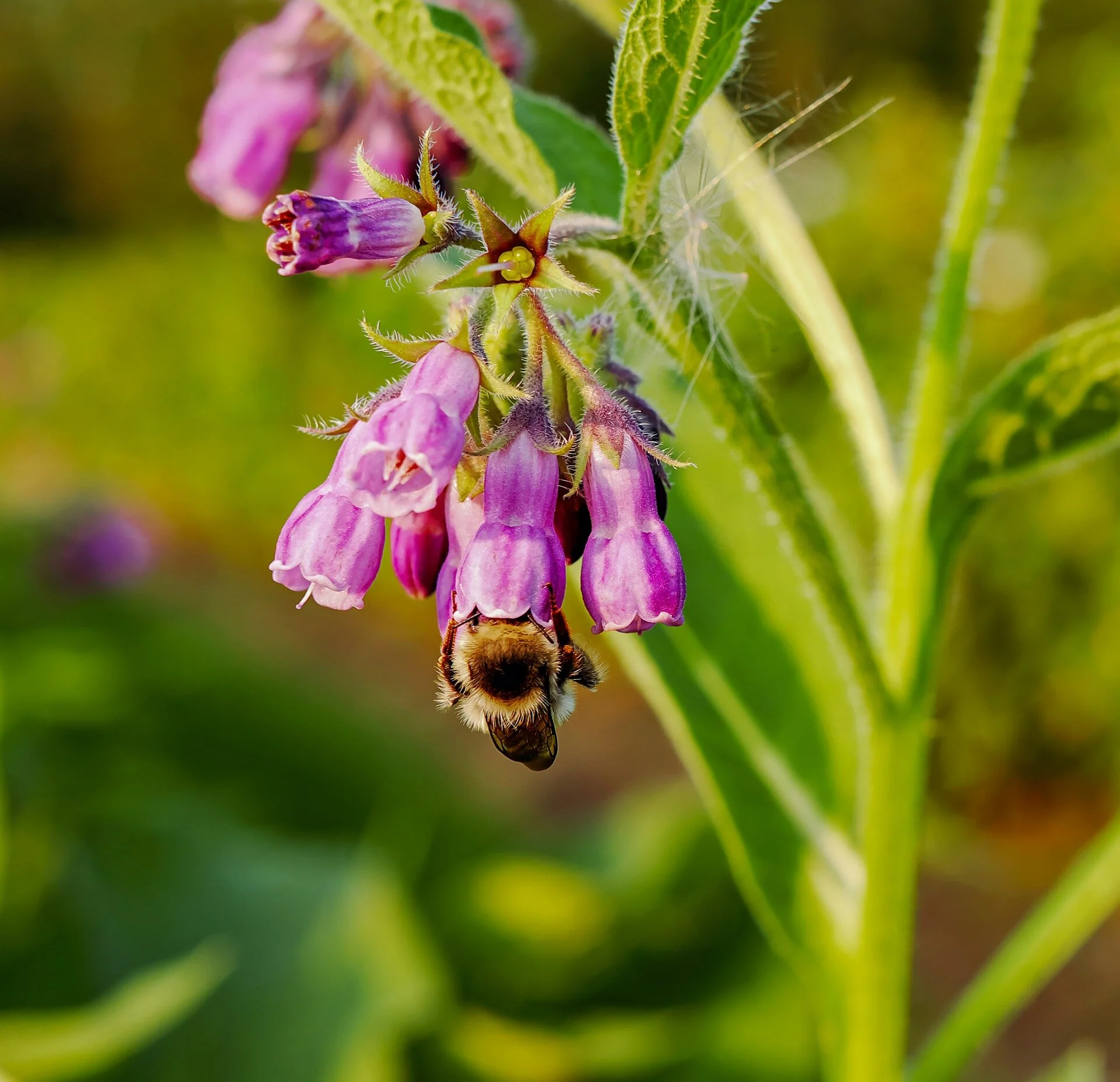Comfrey
Comfrey, Symphytum officinale, is used to treat joint pain and sprains, can soothe pain and heal burns and bruises. Traditionally used in bone healing. It is an herb associated with the element of air.
Part of the Boraginaceae family comfrey has long stalks with large oval shaped leaves and blue-purple to pink bell shaped flowers. It prefers moist but drained soil full of organic matter and lots of sun. It is resistant to cold and will lay dormant during the winter only to come back full force in the spring. Its flowers attract many pollinators to a garden with their abundant nectar.
Comfreys roots and leaves have been used topically for many ages to aid bone healing and treat arthritis. It has anti-inflammatory properties that aid in easing joint inflammation. It is anti-fungal and antibacterial, and is currently being studied for its antimicrobial properties and potential as a natural preservative in topicals. It is not to be ingested as it can be hard on the liver although traditionally it was used to treat ulcers and lung congestion.
One of its largest chemical constituents is allantoin, thought to speed wound healing by triggering cell division. Use in salves for cuts, bruises, and burns and to ease bone sprains and joint pain as well.
References:
1) Salehi, B.; Sharopov, F.; Boyunegmez Tumer, T.; Ozleyen, A.; Rodríguez-Pérez, C.; M. Ezzat, S.; Azzini, E.; Hosseinabadi, T.; Butnariu, M.; Sarac, I.; Bostan, C.; Acharya, K.; Sen, S.; Nur Kasapoglu, K.; Daşkaya-Dikmen, C.; Özçelik, B.; Baghalpour, N.; Sharifi-Rad, J.; Valere Tsouh Fokou, P.; C. Cho, W.; Martins, N. Symphytum Species: A Comprehensive Review on Chemical Composition, Food Applications and Phytopharmacology. Molecules 2019, 24, 2272.




